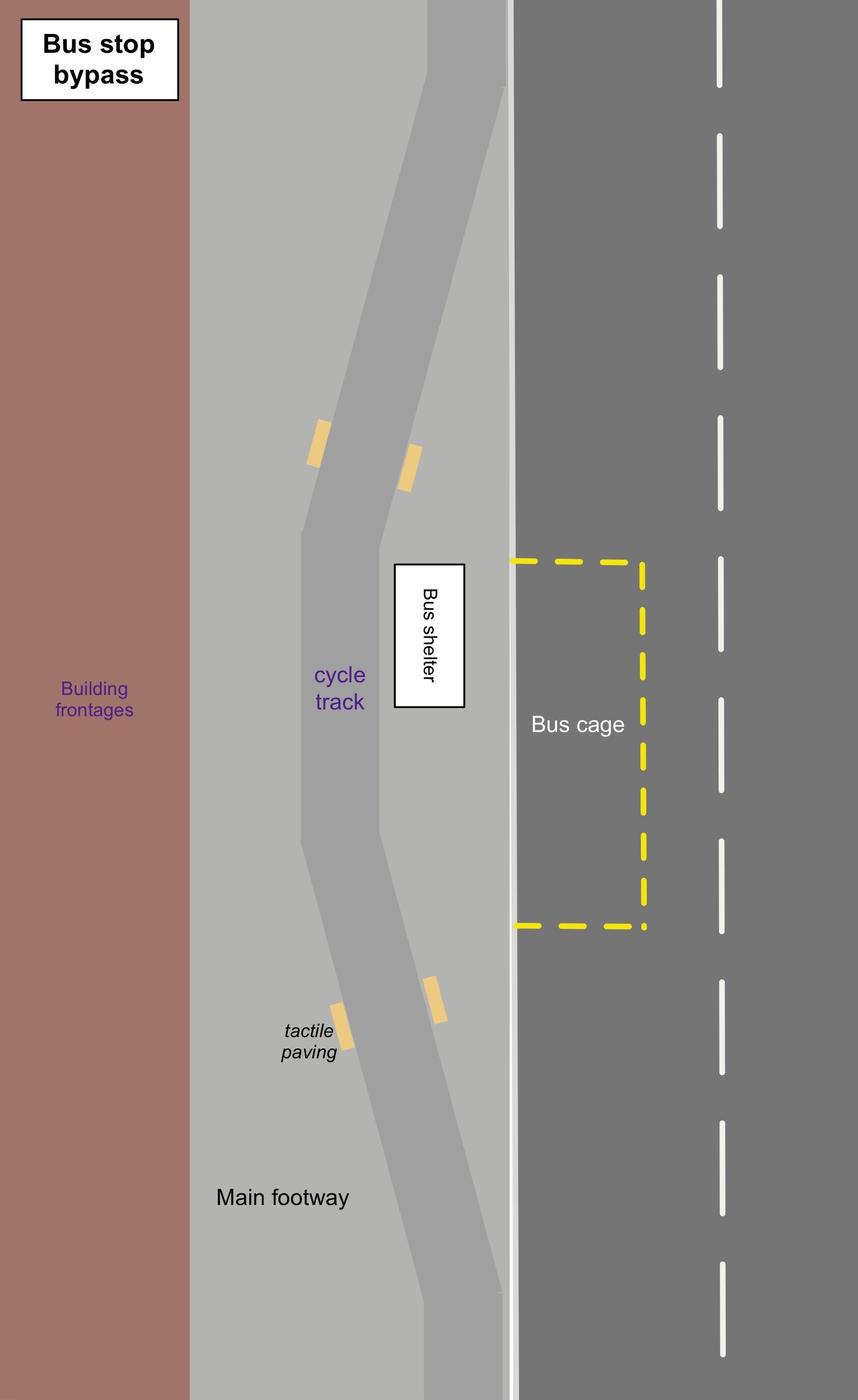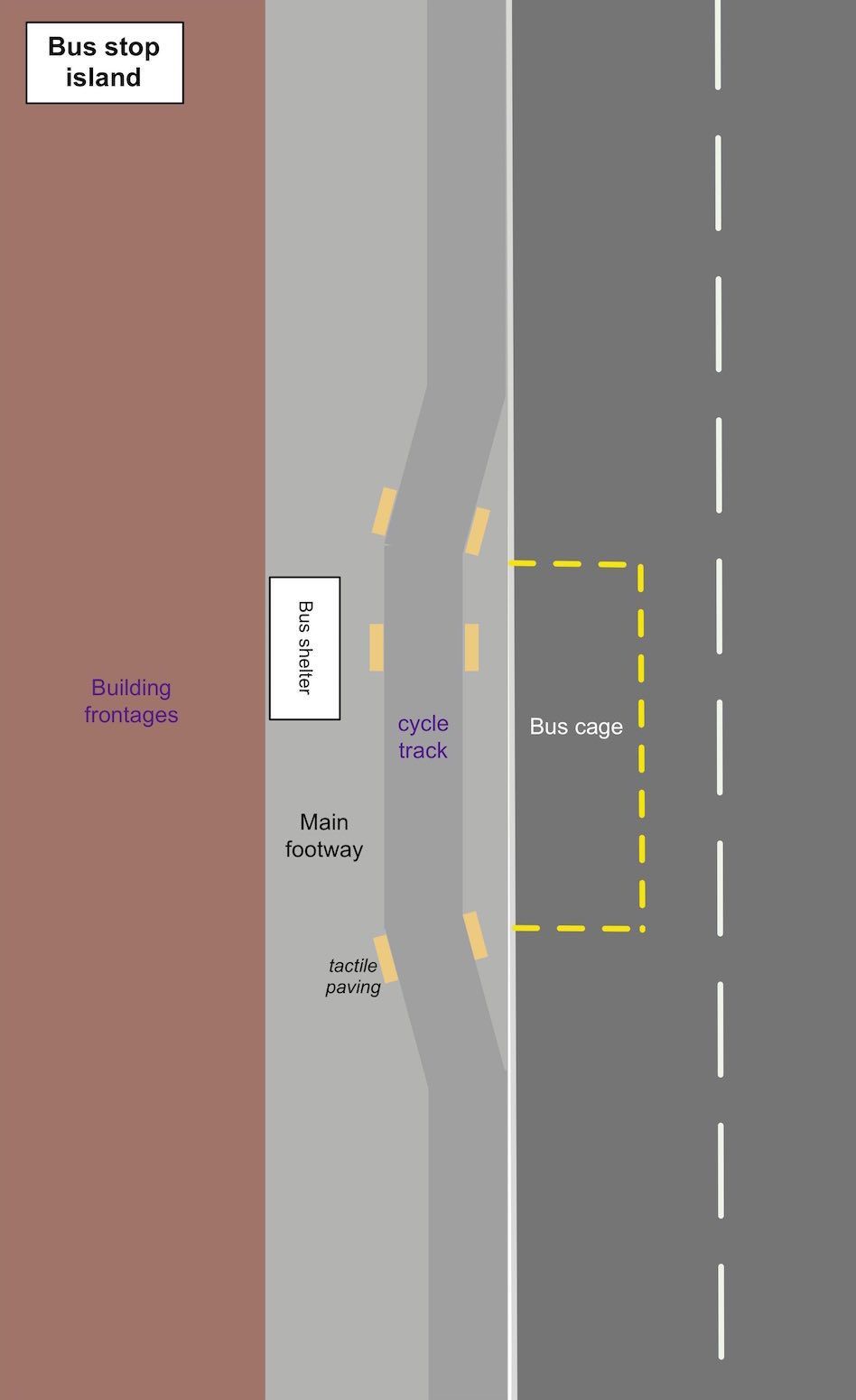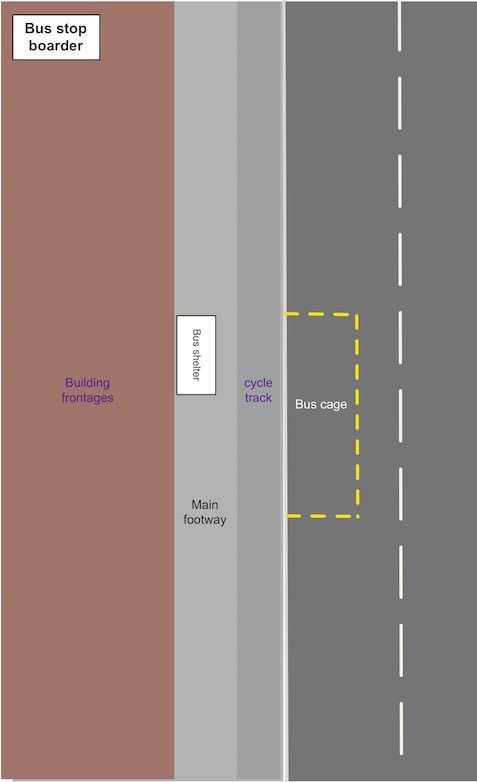Bus Stops as explained by WF branch of the LCC
In Waltham Forest the standard configuration is to place kerb segregated cycle tracks between the footway and the carriageway. There are 3 designs in use which aim to manage the potential conflict between passengers alighting/embarking at bus stops, and people on bikes using segregated cycle tracks.

Bus stop bypasses (aka floating bus stops)
In WFCC’s view the best solutions are bus stop bypasses (also known as floating bus stops), as these minimise the risk of conflict between pedestrians and cyclists. The cycle track deviates from the kerbside to run behind the bus stop shelter and point where bus passengers get on and off the bus. However, this design requires more space than other designs.
Bus Stop Islands
Our second preference is bus stop islands, where the bus shelter is located towards the back of the footway, and the cycle track runs between this and a 1.1m or wider ‘island’ which bus passengers use to get on and off buses.


Bus stop boarders
Our least preferred option is bus stop boarders, where the cycle track runs alongside the kerb, and bus passengers get on and off the bus via the track. Whilst this design is apparently used successfully in Copenhagen, we are concerned of the risk of conflict between cyclists and bus passengers (especially when alighting). This design is particularly unsatisfactory for stops with larger numbers of bus passengers embarking or alighting a particular bus, or with high pedestrian volumes along narrower footways, due to waiting users blocking the cycle track, or passing pedestrians overflowing onto the track.
